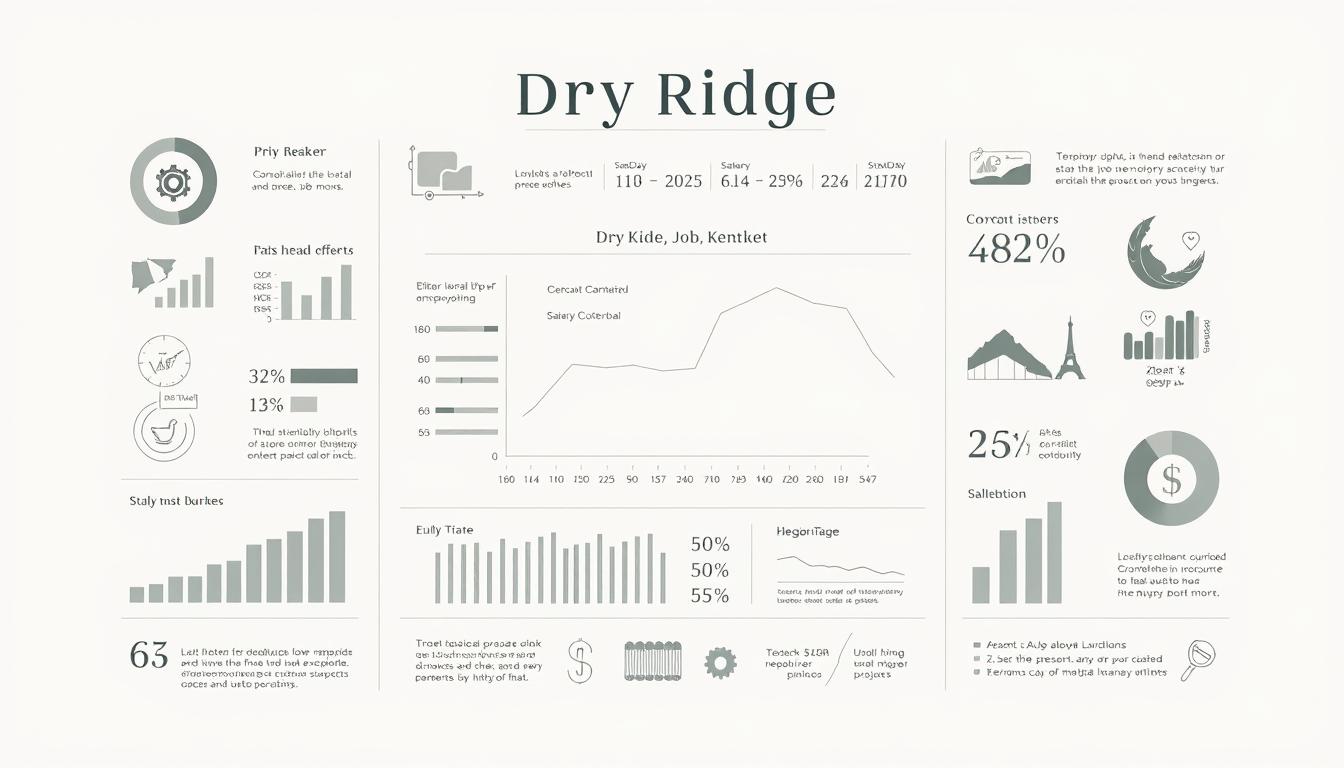What if you could secure a high-demand healthcare role without spending years in medical school? With a 7% projected job growth rate—more than double the national average—neurodiagnostic careers are surging as aging populations require advanced testing for strokes, epilepsy, and neurodegenerative diseases. Now’s the time to position yourself in this specialized field.
This guide breaks down the exact steps to build a competitive application. You’ll learn how to highlight critical skills like EEG interpretation and patient monitoring while leveraging tools like RoboApply’s AI-powered resume builder. Their platform analyzes job descriptions in real-time, ensuring your application aligns with what hospitals and clinics need most.
With over 40% of hiring managers using applicant tracking systems, a generic resume won’t cut it. Platforms like RoboApply simplify the process, offering tailored templates and interview simulations specific to neurodiagnostic roles. Need inspiration? Explore these resume examples to see how professionals structure their experience.
Key Takeaways
- Neurodiagnostic roles are growing 7% through 2032 due to increased demand for brain health testing
- Specialized tools like RoboApply optimize resumes for applicant tracking systems
- 2025 offers prime entry timing as hospitals expand diagnostic teams
- Practical skills in nerve conduction studies and patient care are critical
- Automated job search platforms reduce application time by up to 60%
Understanding the Role of a Neurodiagnostic Technologist
Imagine being the bridge between cutting-edge medical technology and patients seeking answers about their neurological health. Neurodiagnostic professionals operate specialized equipment to map the brain’s electrical patterns and nervous system functions. Their work directly impacts diagnoses for millions dealing with epilepsy, sleep disorders, and nerve damage.
Key Responsibilities in Neurodiagnostics
Your primary task involves recording electrical activity in the brain and nervous system using EEG machines and other monitoring devices. You’ll place electrodes precisely on patients’ scalps for epilepsy evaluations or attach sensors during sleep studies to track breathing patterns. Each test—from nerve conduction studies identifying carpal tunnel to intraoperative monitoring during brain surgery—requires meticulous attention to detail.
Patient interaction forms a crucial part of the role. You’ll explain complex procedures using simple terms, calm anxious individuals before scans, and adjust equipment settings based on real-time feedback. Technical skills like data analysis and equipment calibration ensure physicians receive accurate information for treatment decisions.
Work Environment Overview
Most positions exist in hospital neurology departments, though opportunities abound in sleep centers and outpatient clinics. Expect varied shifts—some facilities require overnight polysomnogram monitoring, while others need weekend coverage for emergency stroke evaluations. You’ll collaborate daily with neurologists, nurses, and rehabilitation specialists to deliver comprehensive care.
Physical demands include standing for extended periods during lengthy procedures and maneuvering bulky equipment. The field rewards those who thrive in fast-paced environments where technical expertise meets compassionate patient care. As diagnostic technology advances, your skills will remain essential in unlocking mysteries of the human nervous system.
Educational Pathways and Certification Requirements
Your journey into neurodiagnostics begins with strategic academic choices. Let’s break down the steps to build qualifications employers value.

High School and Early Preparation
Focus on science and math courses—biology reveals how the nervous system functions, while physics explains equipment principles. Chemistry helps understand contrast agents used in tests. Computer science classes develop technical literacy for operating EEG machines.
Join health occupation clubs or volunteer at clinics. These experiences build patient interaction skills critical for explaining procedures. “Hands-on exposure separates candidates,” notes a Johns Hopkins Hospital training director.
Postsecondary Education and Internships
Earn an associate degree in neurodiagnostic technology—most programs take 18-24 months. Coursework covers neuroanatomy, signal processing, and medical ethics. Clinical rotations let you practice electrode placement and data analysis under supervision.
Many schools partner with hospitals for internships. You’ll assist with sleep studies and epilepsy monitoring while learning equipment maintenance. This EEG certification guide details specialization options.
Certification Process and Continuing Education
After graduation, pursue credentials through:
- ABRET for EEG/EP certifications
- BRPT for sleep disorder testing
- AAET for nerve conduction studies
Exams combine written tests and practical demonstrations. Maintain credentials through workshops—some states require 30 continuing education hours biannually. Specialized training in areas like intraoperative monitoring can increase earnings by 22%.
Developing Essential Technical and Interpersonal Skills
Success in neurodiagnostics requires balancing precise technical execution with compassionate patient care. You’ll operate equipment that maps the brain nervous system while developing communication strategies for diverse clinical scenarios.
Mastering Diagnostic Technology
Start by learning EEG machines that record electrical activity in the brain. Practice placing 25+ electrodes on scalp landmarks like Cz and Fp1 – steady hands prevent signal interference. Calibrate polysomnography devices to track breathing patterns during sleep studies.
Daily equipment checks matter. Clean electrode sites with abrasive gel to ensure clear readings. Troubleshoot artifacts caused by patient movement or faulty connections. Review this critical skills checklist for equipment maintenance protocols.
Building Patient Trust
Explain nerve conduction tests to anxious individuals using analogies: “This measures how fast messages travel through your nervous system, like checking internet speed.” Adjust explanations for children versus adults with cognitive impairments.
During seizure monitoring, remain calm while securing safety equipment. For sleep studies, demonstrate empathy: “I know these sensors feel strange, but they help us understand why you’re tired.” Develop active listening techniques through role-playing exercises.
Strengthen both skill sets simultaneously. Use simulation labs to practice emergency responses while maintaining patient rapport. Many professionals refine their approach using structured skill development frameworks from related medical fields.
How to Land a Neurodiagnostic Technologist Job in 2025
The healthcare sector’s expansion creates prime opportunities for professionals trained in neurodiagnostic technology. Start by targeting hospitals adding epilepsy monitoring units and telehealth services needing remote EEG analysis. Use job alerts on platforms like LinkedIn and Indeed to track openings in these growth areas.

Highlight your associate degree and certifications prominently in applications. “Candidates with ABRET credentials get 40% more interview requests,” states a recent American Society of Neurodiagnostic Technologists report. Include specialized training like polysomnography or intraoperative monitoring – these skills address current staffing shortages.
Structure your resume using targeted examples from related medical fields. Quantify clinical experience: “Performed 150+ EEG tests with 98% accuracy in electrode placement.” Demonstrate adaptability by mentioning new software mastered during internships.
Apply within 72 hours of job postings – early applicants have 3x higher callback rates. Prepare for video interviews by practicing with mock patient scenarios. Many employers now use AI screening tools, so rehearse clear explanations of brain electrical activity recordings and their diagnostic value.
Leverage this EEG certification guide to identify emerging specializations. Focus on roles offering certification reimbursement – it shows employers your commitment to staying current in this evolving field.
Job Search Strategies and Networking Tips
Building connections and using smart search tactics can unlock doors in neurodiagnostics. Focus on platforms and relationships that highlight your expertise with the nervous system and patient care. Here’s how to stand out in this growing field.
Leverage Digital Tools Strategically
Start with ASET’s job board—it lists 300+ openings monthly for certified professionals. Set alerts for terms like “EEG technologist” or “intraoperative monitoring” on LinkedIn and Indeed. Internal hospital boards often post roles 1-2 weeks before public listings—email HR departments directly to express interest.
Grow Your Professional Network
Join ASET’s mentorship program to connect with experienced technologists. Attend their annual conference to discuss emerging tests like portable sleep studies. Share case studies on LinkedIn about optimizing electrode placement for pediatric patients—this showcases practical skills.
Local neurology meetups offer unexpected job opportunities. Bring business cards highlighting your certification and specializations. For resume optimization tips, review these targeted examples used by clinical lab professionals.
Consistent engagement in neurodiagnostics forums and ASET webinars keeps you visible. Combine digital outreach with in-person relationship building to fast-track your career in this essential healthcare field.
FAQ
What certifications do I need to work as a neurodiagnostic technologist?
Most employers require ABRET certification (R. EEG T. or R. EP T.) or CLTM credentials. Some states mandate licensure through agencies like the American Board of Registration of Electroencephalographic Technologists. Start with the EEG Certification Exam after completing an accredited program.
Can I enter this field with an associate degree?
Yes. Over 72% of professionals start with an associate degree in neurodiagnostic technology or related fields. Programs accredited by CAAHEP or CoA-NDT provide hands-on training with EEG machines and evoked potential equipment.
How do I gain experience if internships are competitive?
Volunteer at epilepsy monitoring units or neurology clinics. Join the ASET – The Neurodiagnostic Society for access to virtual externships and shadowing programs. Document all clinical hours for certification applications.
What soft skills matter most for patient interactions?
Develop active listening to address anxiety during EEG tests and crisis management for seizure response. Employers prioritize empathy, adaptability in ICU/ER settings, and clear communication with neurologists.
Which job boards specialize in neurodiagnostic roles?
Use ASET Career Center, Brigham and Women’s Hospital Neurodiagnostics Job Board, and Indeed filters for “Intraoperative Monitoring Technologist” or “Epilepsy Monitoring Tech.” Set alerts for keywords like “Nerve Conduction Studies.”
Will AI reduce demand for neurodiagnostic technologists?
No. The Bureau of Labor Statistics projects 11% growth through 2032. While AI assists with EEG pattern analysis, human expertise remains critical for electrode placement accuracy and interpreting complex cases like status epilepticus.
How do I transition from sleep technology to neurodiagnostics?
Highlight overlapping skills: polysomnography data analysis, CPAP titration, and patient monitoring. Take ASET’s Cross-Specialty Bridge Courses and pursue ABRET’s CNIM certification to qualify for intraoperative neuromonitoring roles.
What’s the average salary for entry-level positions?
Entry-level salaries range from ,000 to ,000 in hospitals, rising to ,000+ with CNIM certification. Use the Salary Calculator on ASET’s website to compare regional pay scales for pediatric vs. adult neurology roles.


















